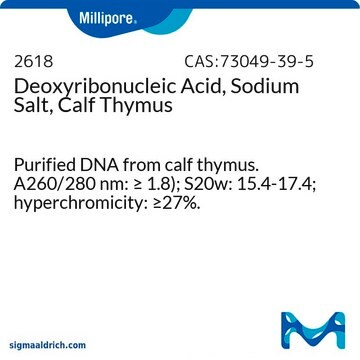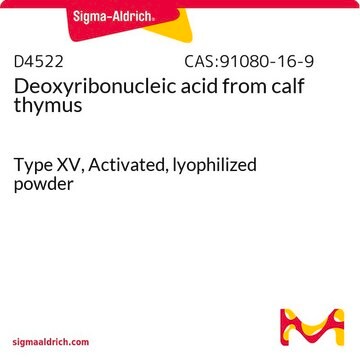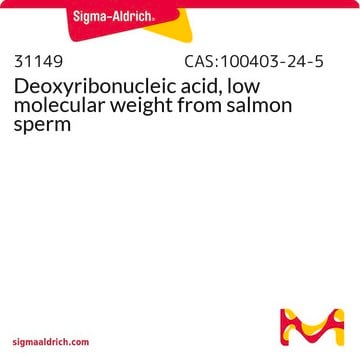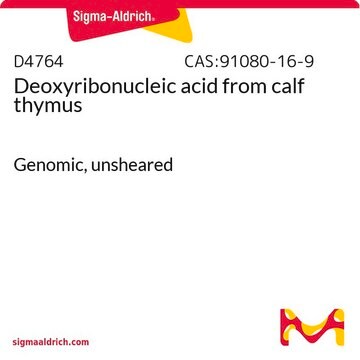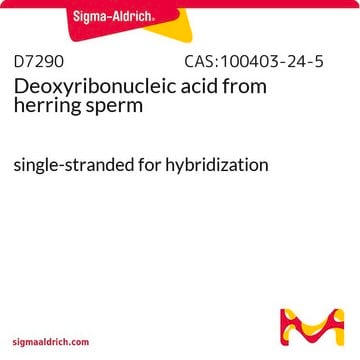D3664
Deoxyribonucleic acid sodium salt from calf thymus
suitable for substrate for DNase (Readily soluble)
Synonym(s):
CT-DNA, calf thymus DNA, DNA sodium salt from calf thymus, Thymonucleic acid sodium salt
About This Item
Recommended Products
form
powder or crystals
suitability
suitable for substrate for DNase (Readily soluble)
storage temp.
2-8°C
Looking for similar products? Visit Product Comparison Guide
Application
Packaging
related product
Storage Class Code
11 - Combustible Solids
WGK
WGK 3
Flash Point(F)
Not applicable
Flash Point(C)
Not applicable
Personal Protective Equipment
Certificates of Analysis (COA)
Search for Certificates of Analysis (COA) by entering the products Lot/Batch Number. Lot and Batch Numbers can be found on a product’s label following the words ‘Lot’ or ‘Batch’.
Already Own This Product?
Find documentation for the products that you have recently purchased in the Document Library.
Customers Also Viewed
Protocols
To standardize a procedure for the enzymatic assay of Deoxyribonuclease I.
To standardize a procedure for the enzymatic assay of Deoxyribonuclease I.
To standardize a procedure for the enzymatic assay of Deoxyribonuclease I.
To standardize a procedure for the enzymatic assay of Deoxyribonuclease I.
Our team of scientists has experience in all areas of research including Life Science, Material Science, Chemical Synthesis, Chromatography, Analytical and many others.
Contact Technical Service
